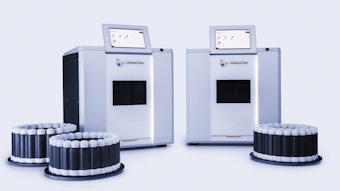Designs for clinical evaluation of antiperspirant effec tiveness are mostly based on the FDA guideline for effectiveness testing of OTC antiperspirant products. The guideline sets forth criteria for the test subjects, test conditions, test procedures and statistical analysis of the data. Gravimetric methods are employed to measure perspiration reduction following once daily application of the product to the axilla for two to four days.
Testing in the axillae as outlined in the guideline is important to ensure that there will be a relevant perspiration reduction in a majority of consumers, not just a minimum reduction in sweat production that is statistically significant but not noticeable in practice. However, for routine use in formulation development, clinical testing in the axillae is impractical for several reasons:
• Antiperspirant products may not be used in the test axillae for 17 days before the first treatment with the test products. In practice, this means that the test duration from start of screening is approximately three weeks.
• Only two test areas, the left and right axillae, are available. A test formulation may be compared with only one control in a single panel.
• Differences between panels make comparisons of antiperspirant activity collected in separate panels difficult.
In 1998, a screening method allowing parallel comparison of up to eight antiperspirant formulations in a single panel was developed in our institute. Test fields located on the back are treated on four consecutive days prior to collection of sweat approximately 24 hours after the last treatment. Since its introduction, we have collected experience and data from more than 100 antiperspirant tests in this model. Over the years, improvements in the methodology have prompted additional validation tests.











